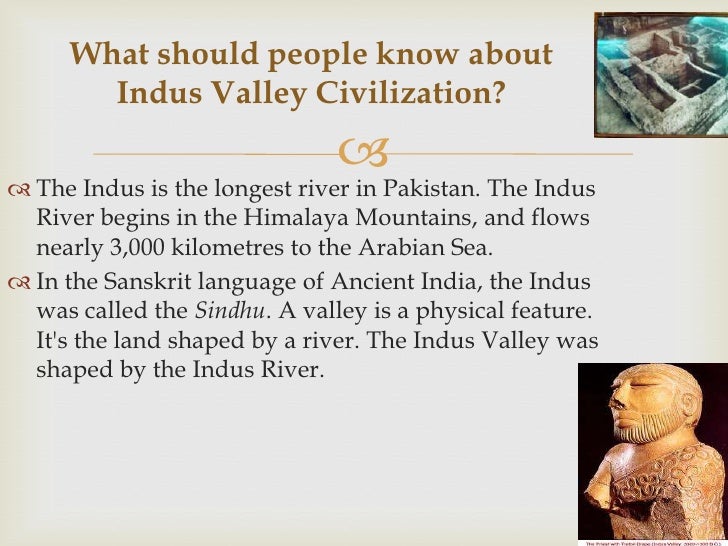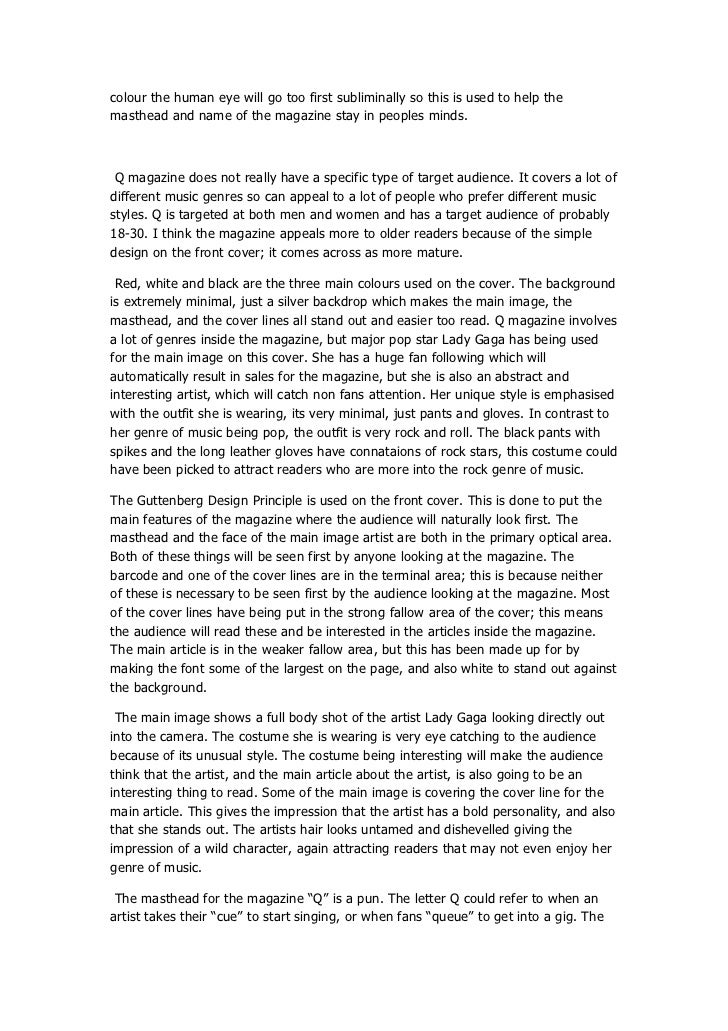
Indus Valley Civilization Essay Writing was developed for communication among the people of the civilization and possibly other countries. The development of writing was crucial in a The Indus valley civilization was the largest of four ancient urban civilizations Mesopotamia, Egypt, South Asia, and China. It was discovered in the ’s but most of its ruins remain to 10/04/ · An Overview of the History of the Indus Valley Civilization Essay. Indus Valley Civilization is one of the oldest and largest of the four ancient civilizations of the world. It is
Essay on Indus Valley Civilization For Students
In this essay we will discuss about Indus Valley Civilisation:- 1. Introduction to Indus Valley Civilisation 2. Race of Indus Civilisation 3. Date 4. Town Planning and Architecture 5. Social Life of the People 6. Economic Life of the People 7. Religion of the People 8. Art and Craft 9. Causes for the Destruction of Indus Valley Culture Contribution of the Indus Valley Civilisation. For a long time it was believed that Indians are stay at home people and our civilization was only of recent origin. But the excavation at Harappa and Mohenjo-Daro, which led to the discovery of Indus Valley civilization, has set all these doubts at naught. It has now been established beyond all doubts that India possessed one of the advanced civilisation at a time when the English people were still living in the jungle age, essay on indus valley civilization.
This unique and important civilisation of the pre-historic times in India was for the first time discovered by Daya Ram Sahni and R. Banerjee in and Further excavation were carried out along the Indus between Rupar at the foot of Shimla hills and Sutkagendor, miles close to Karachi, where similar remains were discovered. In essay on indus valley civilization years excavation at village Alamirpur near Meerut and in Saurashtra have also revealed the similar remains. All these discoveries point to the existence of an advanced civilisation in pre-historic India which is now popularly known as Indus Valley Civilization or Harappa Culture, essay on indus valley civilization. Though this civilisation is termed as Indus civilisation it covered even area beyond the Indus Valley.
It extended from the upper Sutlej to the Gulf of Camba in the South and from Makran coast of the Arabian Sea in the west to the Jamuna-Ganges country in the east. Thus the Indus civilisation was the largest of the early civilisations. There has been much controversy amongst the historians regarding the race to which the people of Indus Valley civilisation belonged. Different scholars have tried to speculate, mainly on the basis of human skeletons and skulls found in the ruins, about their race. While some scholars are of the opinion that they were Aryans. This essay on indus valley civilization is not acceptable to Sir John Marshall.
Essay on indus valley civilization holds that this civilisation was quite different from the earlier Vedic civilisation and that it was quite different from that of the Aryans. According to Gorden Childe, the people of Indus Valley were of Sumerian race. However, he fails to give convincing and substantial proof in support of this view. Banerjee has expressed the view that the people of the Indus Valley Civilisation were Dravidians, essay on indus valley civilization. However, if we take the essay on indus valley civilization customs of the people of Indus Valley, it would be difficult to accept this contention. On the basis of the finds discovered Dr. Guha has expressed the view that the people belonged to a mixed race.
Thus we find that there is great difficulty in ascertaining the race to which the people of Indus Valley civilisation belonged, essay on indus valley civilization. Most probably many races contributed to the evolution of Indus Valley culture and perhaps Aryans also formed an important part of them. But one thing can be said with certainty that the Indus Valley civilisation was of a very high order. The Indus Valley, civilisation combines the features of the Neolithic and copper age. The excavation at Mohenjo-Daro have brought to light seven different it layers of buildings, which have assigned to three different period viz.
The early layers lie submerged under sub-soil water. After due consideration the scholars have assigned years to every age, and come to the inclusion that this civilisation must be having an early beginning because it must have taken the people quite a long time to develop such a urban life. Another criteria adopted by the scholars in determining the age of the Indus civilisation is discovery of seals m Mesopotamia, which are dated back to B. On the basis of these seals and other available material the scholars have suggested that the upper most layer belong to the period C B. and the lower layers must have belonged to earlier period.
Therefore, the period which is roughly assigned to the Indus civilisation ranges essay on indus valley civilization B. to B. All the cities of the Indus Valley civilisation such as Mohenjo-Daro, Harappa, Chanhuduro, Lohumjudaro etc. Of a these Mohenjo-Daro is better preserved and its excavation has revealed the points that the successive cities were built according In tin plan. This city was built after careful planning, as is clear from streets which though vary in width yet intersect at right angles. These streets thus divide the entire city into square or rectangular blocks, which are further intersected by narrow lanes.
Some of the streets are essay on indus valley civilization long and wide, essay on indus valley civilization. At least one street has been traced which is more than half a mile long and at places over 30 wide. All the roads are aligned east to the west and north to south. The corners of the streets were rounded so that loads should not get dislodged. The bricks used for the pavements were comparatively of small size and were plain surfaced. L shaped bricks were occasionally used for corners. Mud mortar was universally used. The plaster of the wall was mainly of mud or gypsum. The city had an elaborate drainage system, consisting of horizontal and vertical drains, street drains, soak-pits, etc.
The architecture of Mohenjo- Daro though not quite artistic and beautiful was quite utilitarian. The peoples used burnt bricks in building walls, pavements, bath rooms, drains, etc. Some sun-baked bricks were used for the foundation. The foundations were usually very deep. The buildings were generally erected on high platform to protect them against floods, which seem to have been quite common. The size of the Essay on indus valley civilization houses differed from one and another. The small houses consisted of minimum two rooms while the big ones had large number of rooms and often could be mistaken for the palaces. Each house had a wall and drain which were connected with the main street drain.
Vertical drain pipes suggest that bath rooms were constructed in upper storeys also. The presence of the stairways also suggests that the houses used to be double-storey; The entrance to the houses were placed in narrow by-ways and windows were non-existent. The roofs were floored by placing reed matting of veans and covering them with mud. The planning of the houses does not suggest any purdah. The size of the doors used in the houses varied from 3 feet 4 inches to 7 feet and 10 inches. In addition to the dwelling houses certain spacious and large buildings also-existed.
Some of these possessed large pillared halls about 80 ft. These buildings were probably supposed to be temples, municipal or assembly halls. Another important feature of the houses which deserves mention was that the people were very fond of baths, essay on indus valley civilization. In every house a special place was set aside for a bath-room. The floor of the bath-room was water-tight with a clear slope towards one corner. The water of the bath-room would pass to the latrine which was generally situated between bath-room and the outer wall of the house. People were probably in the habit of taking bath daily. The love of essay on indus valley civilization people for the bath is further confirmed from the discovery of a public bath at Mohenjo-Daro.
This bath was 30 X 23 X 3 feet and was surrounded by varandah, galleries and rooms on all sides. It was constructed of the burnt bricks and was connected with the fine drainage system for filling and emptying it. The swimming baths were filled with the water from the wells, which were built of burnt bricks. With a view to keep the wells neat and clean steps were provided. In addition to the Great Bath at Mohenjo-Daro, a bath has also been discovered at Harappa which measures 39 X 13 X 8 feet. The walls of this bath were plastered with essay on indus valley civilization and lime morter. People used these baths on religious occasions as well as otherwise.
Thus we find that the people of Indus Valley civilization attached great significance to the bath like the Hindus. Careful study of the above features of town planning viz. adequate water supply, efficient drainage system, and existence of pucca houses shows that the art of town planning and architecture was quite advanced. The presence of lamp posts at intervals indicates that the system of street lighting also existed. In short we can agree with Dr. It has already been observed that the people of Mohenjo-Daro were of cosmopolitan character, essay on indus valley civilization. Evidently these people were attracted by the fertility and productivity of the area and came from different parts of Asia.
The people of the Indus Valley were both vegetarian and non-vegetarian. They cultivated wheat, bailey rice and bred cattle sheep, fish and poultry for food. They also used fish as food. They were also in the habit of taking fruits and vegetables and date was the most favorite fruit of the people. As regards, the non-vegetarian food they took beef, mutton, poultry, flesh etc.
Indus Valley Civilisation in 10 Points-Indus valley civilization-Early Civilisation
, time: 10:14The Indus Valley Civilization: A Study: [Essay Example], words GradesFixer
Essay about The Indus Valley Civilization. From the year BC to BC, a major civil culture, known as the Indus River Valley Civilization, made it to its climax in a region now 18/08/ · Essay on Indus Valley Civilization For Students. Indus Valley Civilization or Harappan Civilization Essay. It is believed that Indus Valley Civilization flourished between The Indus valley civilization was the largest of four ancient urban civilizations Mesopotamia, Egypt, South Asia, and China. It was discovered in the ’s but most of its ruins remain to

No comments:
Post a Comment